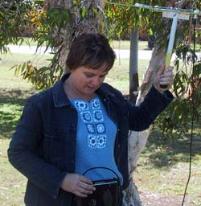Tracking collars to show whether koalas are 'hot to trot'
Published on 22 September, 2004
Radio transmitting collars on koalas on St Bees Island near Mackay will indicate both movement and temperate changes in the habitat.
When matched with environmental conditions at the time, the tracking results will indicate whether the koalas prefer to roost in non-food trees during summer as some sort of adaptation to their microenvironment.
 PhD candidate Delma Clifton, of Central Queensland University, said a better understanding of koalas’ use of microenvironments would inform future decisions on habitat classification and conservation plans.
PhD candidate Delma Clifton, of Central Queensland University, said a better understanding of koalas’ use of microenvironments would inform future decisions on habitat classification and conservation plans.
“It will be proposed that three factors should be included in assessment of suitable koala habitat ... the presence of food trees, vegetation structure and microclimate,” Ms Clifton said.
“St Bees Island is a tropical island that experiences a distinctly different climate to any other area where koalas have been studied to date. As such it presents the possibilities of finding unique responses to the environment by koalas.” Ms Clifton said the study would also focus on the koalas’ water use to find the exact advantage gained through the use of non-eucalypts.
“This is an important aspect of koala habitat that has not previously been considered in development of habitat suitability models.”

